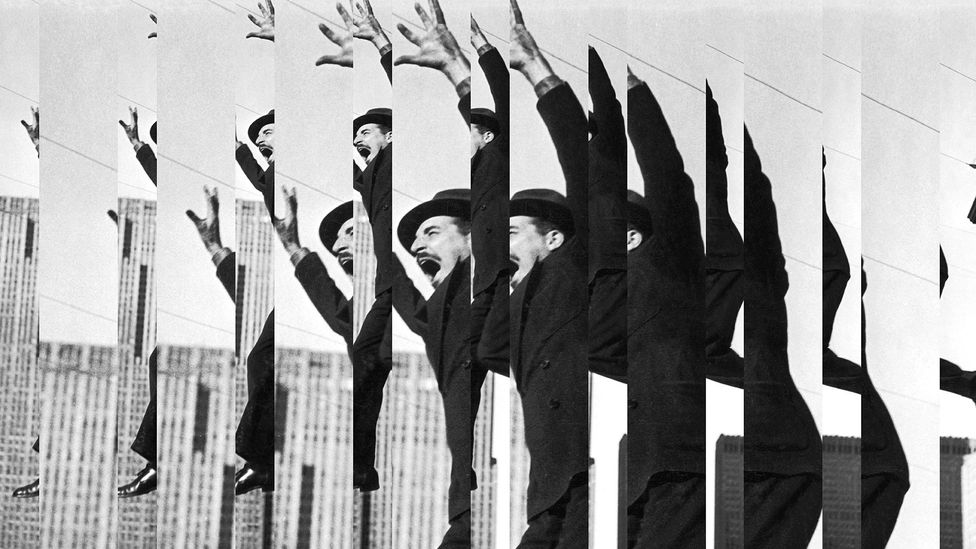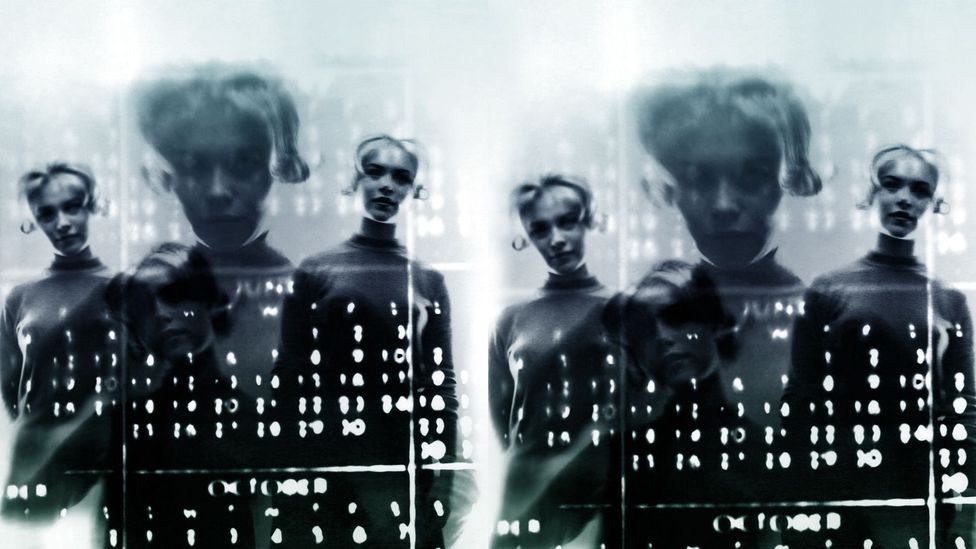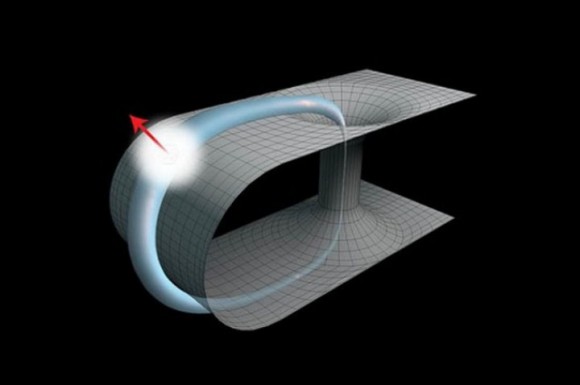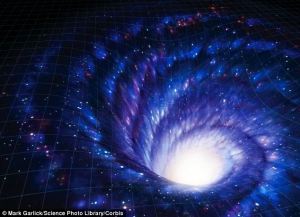
The mishaps caused by time travellers exploring the past are a staple of science fiction. But what does physics think
One of the most common occurrences in Doctor Who is characters getting into trouble by changing, or trying to change, the past. As with so many time-travel stories, interfering with past events is represented as incredibly dangerous.
In the Season Six finale The Wedding of River Song, the Doctor’s friend and lover River Song changes the course of history when she refuses to shoot the Doctor – even though, this being a story about time travel, the audience has already seen her do it and knows it is inevitable.
Her actions completely break the Universe. Different time periods fuse together, so the characters find themselves in a version of London that has Victorian-era technology, but also flying cars and dinosaurs. Only when River goes through with her fated actions does the normal flow of time resume.
In reality, physicists and philosophers think that such paradoxical situations wouldn’t happen.
“A paradox isn’t really something you can create,” says theoretical physicist Barak Shoshany at Brock University in St Catharines, Canada. Instead, if our theory predicts a paradox, that means our theory is somehow inconsistent. “If your theory creates a paradox, that means your theory cannot be correct.”
It turns out there are many ways to resolve the potential paradoxes that arise from time travel. Some involve parallel universes and eldritch quantum phenomena; others rely on as-yet-undescribed mechanisms for creating logical consistency in the Universe. Which solution is correct depends in part on exactly what time is and how it works: something about which physicists are far from certain. But one way or another, the physics of time will see to it that we can’t create paradoxical situations.
The most obvious solution is that time travel to the past just isn’t possible. If we can’t travel into the past, we can’t mess it up.
We are free to move up and down, forwards and backwards in space – but we can’t do the same thing with time
This seems natural when we consider our experience of time: it only goes in one direction. Monday leads to Tuesday leads to Wednesday, and so on throughout our lives. We never find ourselves doubling back from Tuesday to Monday. (Read more from BBC Future about why time travels forwards, not backwards.)
However, it’s not obvious why time should operate like this. Space doesn’t: we are free to move up and down, forwards and backwards, left and right. Some directions of travel are difficult, because we have to overcome Earth’s gravity or dig through solid rock, but they are not impossible. Yet our movement through time is all one way.
There are two kinds of explanation for this “arrow of time”. The first is that it is a fundamental property of the Universe, something baked into the very nature of things. This has intuitive appeal, but it has been strongly challenged by studies of quantum mechanics: that is, the physics of the very tiny.
On quantum scales, processes can be driven in either direction, says quantum physicist Vlatko Vedral at the University of Oxford in the UK. “If you can excite an atom from one state to another, then quantum mechanics says you should be able to, with 100% efficiency, go backwards.” Experiments suggest this is correct. “At least in principle, everything ought to be reversible.”
If you drop a coffee cup onto a hard floor it will shatter, but you never see broken coffee cups spontaneously re-assembling themselves
Hence many physicists take a second approach to the arrow of time: they argue that it is not fundamental, but instead emerges from other phenomena.
“There are calculations that you can do, where you don’t include the ideas of space or time in the calculations, and it gives you the right answer anyway,” says cosmologist Katie Mack at the Perimeter Institute for Theoretical Physics in Waterloo, Ontario. “Maybe space and time are emergent properties. Maybe they’re even somehow illusory, and there’s some mathematical framework for the Universe that’s more fundamental than space and time.”
One such explanation can be traced back to the Austrian physicist Ludwig Boltzmann. He was interested in why certain processes, in the world of big objects that we live in, are irreversible. For example, if you drop a coffee cup onto a hard floor it will shatter, but you never see broken coffee cups spontaneously re-assembling themselves.
Things only become tidy if energy is used to tidy them. “It takes more energy to untangle your headphones,” says astrophysicist Emma Osborne at the University of York in the UK. “Whereas there’s infinite ways they can be tangled.”
Drop a coffee cup on the floor and it will likely beak; but it’s almost impossible that nature will reassemble it unaided
Boltzmann explained this by saying that regenerating coffee cups or detangling headphone cables are not fundamentally impossible, but simply incredibly unlikely – so unlikely that you would never witness such a thing even if you waited for trillions of years. They’re unlikely because there are a huge number of ways the pieces of the broken coffee cup could be shuffled around, say by air currents, and hardly any of them would cause it to re-assemble. Most of them will just shuffle the mess around.
Decades later, this is still one of the best explanations for the arrow of time, says Vedral. It’s simply too difficult in practice to truly reverse most changes – and that means we consistently experience time going in one direction.
That’s probably true but there may also be a deeper explanation for the arrow of time, argues philosopher Emily Adlam at Chapman University in Orange, California.
Time: The Ultimate Guide
To mark the 60th anniversary of Doctor Who, we’re exploring the big questions about time, including the science of time travel, how clocks have shaped humanity, and even the mind-bending temporal consequences of flying into a black hole. Read and watch more from Time: The Ultimate Guide.
It’s necessary for the Universe to be internally consistent, Adlam says. “Consistency is the need to avoid logical contradictions.” At the most abstract level, we can think of the Universe as containing lots of different processes that can interact with each other. “What possible ways of connecting processes together will lead to logical contradictions?” she says.
“The answer is, basically, connecting processes around in loops will very reliably end up creating logical contradictions,” says Adlam. Going back in time and interfering with history would be an example of such a loop. The malign time traveller who tries to prevent Rosa Parks from carrying out her protest in the episode Rosa would, on this view, be violating some of the deepest laws of the Universe.
“If you want to avoid logical contradictions, what you have to require is that things don’t get connected in loops,” says Adlam. “They just get connected in linear ways and they never loop back around on themselves.”
This requirement to avoid causal loops sets limits on how time can work, says Adlam. “You get something like an arrow of time, purely as a result of this constraint that processes can’t loop back on themselves.”
In short, there may be two requirements that force time to flow in only one direction: the need to be logically consistent, as emphasised by Adlam, and the tendency for random processes to create more disorder rather than more order, as Boltzmann described.
With that in mind, let’s look at the two kinds of time travel paradoxes, both of which crop up in Doctor Who, and see how they might be resolved in practice.
Going back in time to stop Rosa Park’s landmark protest would contravene the most fundamental laws of the Universe
First, the bootstrap paradox. This occurs “when something is created out of nothing or something is causing itself”, says Shoshany. Suppose, he suggests, that a time machine appears in your room right now. An older version of you steps out, announces they are from 10 years in the future, and gives you the plans for the time machine. You spend the next decade building the time machine, then use it to go back to today to give yourself the plans. The question is, says Shoshany: “Who made the plans for the time machine?”
The Twelfth Doctor spells out a similar example involving the music of Beethoven in the opening of Season Nine’s Beyond the Flood.
The bootstrap paradox is a curious idea because it doesn’t create any inconsistency: the whole story ties up neatly. It’s just that somehow new information – a blueprint for a time machine – has appeared from nowhere.
Fortunately, there is a relatively simple escape from the bootstrap paradox. “Maybe this is just something I made up,” says Shoshany. “There’s no reason it would actually happen.
If you really could travel to the past, it would be virtually impossible to avoid changing anything
“The more worrisome paradox is the consistency paradox,” continues Shoshany. “Which is more colloquially known as the ‘grandfather paradox’.” This is the familiar problem where you go back in time and change a key event in your own personal history. For example, you kill your grandfather while he is still a child. This makes it impossible for you to be born, so there is nobody to go back in time and kill your grandfather – creating a paradox.
WATCH: Doctor Who explores the ‘grandfather paradox’
In Season One’s Father’s Day, the Doctor’s companion Rose Tyler creates an identical paradox when she goes back in time and saves her father from dying when she is little – transforming her life history and unleashing dangerous forces.
Unlike the bootstrap paradox, the grandfather paradox seems inescapable. If you really could travel to the past, it would be virtually impossible to avoid changing anything. Even if you have the common sense not to murder your own ancestors, it wouldn’t matter, because small changes can ripple out into the world and ultimately cause major disruptions.
How can we avoid it?
The simplest kind of explanation is that time travel to the past just isn’t possible. This “chronology protection conjecture” was set out by the late Stephen Hawking in a 1992 paper. Shoshany sums it up: “We don’t need to worry about paradoxes because time travel is impossible and that’s it.”
The problem here is that, while time travel to the past looks extremely unlikely and difficult, our incomplete understanding of physics means we can’t completely rule it out.
An alternative interpretation is that time travel to the past is possible, but you can’t change anything. This is called the Novikov self-consistency principle, after Russian physicist Igor Dmitriyevich Novikov who discussed the idea in a series of publications culminating in a study published in 1990.
One theory states that by going back into the past and changing history, you create an alternate timeline – essentially an entirely different universe (Credit: Getty Images)
“Try to prevent your grandparents from meeting, you end up actually being the one who made them meet in the first place,” says Shoshany.
An example of this takes place in The Waters of Mars. The Tenth Doctor saves the life of astronaut Adelaide Brooke. This potentially rewrites human history, because her death is a pivotal event. However, Adelaide is appalled by the Doctor’s hubris and kills herself, restoring the timeline.
It’s not clear how this would work in practice. How would the Universe “know” that someone is interfering with history?
“This conjecture to me always seemed kind of weird, kind of unjustified,” says Shoshany. He has described scenarios in which objects move in and out of time machines, and which cannot be described in a mathematically consistent way – violating the conjecture. “This conjecture just cannot be correct.”
WATCH: Could your dreams predict the future?
Shoshany favours an alternative scenario. If time travel to the past is possible, he argues, it really should be possible to change things – but doing so will create an alternate timeline. Instead of creating a Universe-breaking paradox, you would create a second universe with a different history.
Parallel universes are a staple of Doctor Who, from the Third Doctor adventure Inferno to the alternative timeline explored by the Tenth Doctor and Rose Tyler in Rise of the Cybermen and Doomsday, and the sentient universe of It Takes You Away.
In reality, parallel universes are a much-debated concept. Although some theories of physics can be interpreted as implying the existence of them, there is as yet no physical evidence they exist.
The theories about time travel have one main issue – there is no way to conduct experiments to see if any of them stack up
Quantum mechanics offers one way that parallel universes could exist. A tiny subatomic particle can exist in a state called superposition, which means it is not in one specific place. Instead it exists in a range of spaces, each of which has some probability of being “correct”. Only when an experimenter observes the particle does its state become specified: it “collapses” from a range of possible positions into one.
Quantum physicists disagree over how to interpret the collapse. One interpretation, put forward by Hugh Everett in the late 1950s, is that the particle doesn’t really “choose” one single position. Instead, every possible option plays out in a different universe. Wherever we observe the particle is where it is in our Universe, but in other universes it is somewhere else. This became known as the “many worlds interpretation” of quantum mechanics.
There is no physical evidence that these other universes exist, and it is difficult to imagine what would constitute evidence. However, other interpretations of quantum mechanics have problems of their own, so the many worlds interpretation remains of interest.
If it is true, it offers a way to time travel into the past, and change things, without causing paradoxes. One of the first physicists to propose this was David Deutsch in a 1991 study. He argued that if you travel into the past and change something, you will create a second universe, parallel to the original one. In this second timeline, the altered version of history plays out – while in the original things go on as they always did.
On this view, you might be able to travel into the past, but “you can’t go back on your own worldline,” says Osborne.
Shoshany and his colleagues have developed this idea further. In a 2020 study, they showed that this version of time travel need not lead to infinite numbers of timelines. Infinities are generally a sign that a theory is wrong, says Shoshany, so this means it is more plausible. In February this year, they published a more realistic version of this model, which again avoided paradoxes and infinities. The following month, they explored the scenario in more detail, showing that a branch in the timeline would start out localised and gradually expand to affect more of the Universe.
It turns out that there are many possible scenarios that could take place if we were somehow to travel into the past. Right now, there is no way of conducting an experiment to determine which, if any, of these scenarios of time travel is correct. Finding the correct answer will require understanding how and why the arrow of time really exists. Until we have greater clarity on the laws underpinning the Universe, we can’t choose between our ideas about time travel.







![The Future According to H. G. Wells [INFOGRAPHIC]](https://futurism.com/wp-content/uploads/2016/10/Homepage-Thumbnail-3.jpg)




